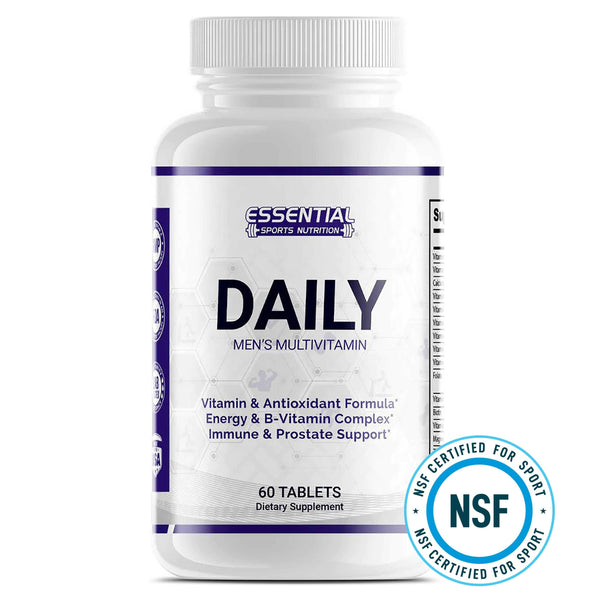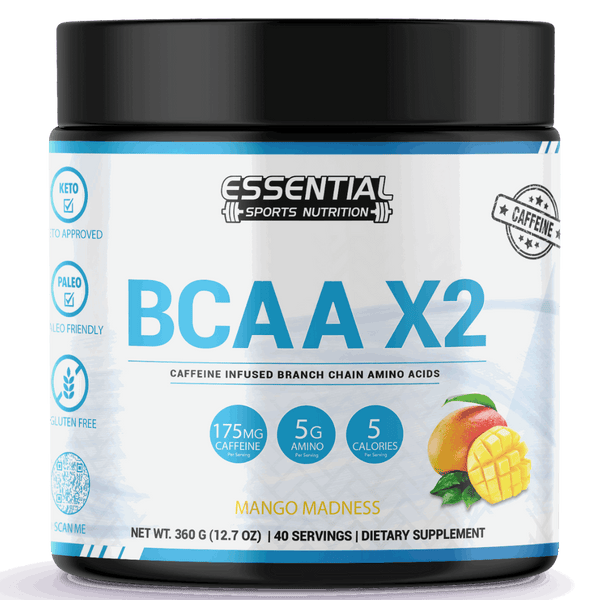Weaks Wrists? Understand Why and Learn How to Strengthen Them
Many people, especially those who go work out regularly, sometimes start to feel wrist pain from lifting. The wrist joint is quite complex and takes a lot of stress during weight-bearing exercises. This stress can cause pain that gets worse if not treated. Some athletes and fitness fans keep working out, making their wrist injuries worse. This can really slow down their training.
However, Active Hand Therapy can help by providing special care for wrist pain. They focus on healing wrist injuries so you can keep training. With their help, you can tackle wrist pain and move on with your fitness goals. When your wrist hurts, it's like a big hurdle. But the right therapy means you can face it and move forward.

Key Takeaways
- Wrist pain is often seen in those who lift weights.
- The wrist goes through a lot of stress, making it prone to injuries.
- Working out despite the pain can make the injury worse.
- Active Hand Therapy specializes in reducing wrist pain.
- Proper treatment allows you to keep training without harming your wrist further.
Understanding Wrist Pain from Lifting

Wrist pain from lifting affects many who love to work out or play sports. To tackle this issue, we must understand why it happens and how it interrupts daily life.
Common Causes of Wrist Pain
Ligament strains often cause wrist pain when lifting. These strains happen mainly at the wrist's back and side. They come from doing the same moves over and over or lifting wrongly or too heavily.
Knowing where the issue lies is key to easing the pain and stopping extra harm.
Impact on Daily Activities and Training
Weightlifting wrist pain can really mess with your daily routines. Everything from small tasks needing good hand control to heavy-hand activities can become hard.
Hand Therapists have many ways to help with wrist pain from lifting. They might suggest using special wraps or braces, along with certain exercises and massages. The goal is to relieve the pain while you keep working out.
The Anatomy of the Wrist Joint

The wrist joint is very complex, needing both moving and still parts. To understand its workings and why it might hurt, especially during lifting, knowing its anatomy is key.
Structure of the Wrist
The wrist consists of eight small carpal bones. They connect the hand and forearm bones. Ligaments in the wrist keep it steady but flexible too.
Lifting puts a lot of stress on the wrist. The carpal bones' alignment and the ligaments' function let us move our wrists in many ways.
Common Areas Affected During Lifting
Lifting heavy weight affects several wrist areas a lot. Ligaments like the scapholunate and lunotriquetral ones are heavily stressed. This can cause injuries. Muscle overuse in the forearm can lead to wrist pain too.
Hand Therapists are experts at treating wrist problems from lifting. They use methods to ease the pain, letting you get back to training.
| Component | Function |
|---|---|
| Carpal Bones | Connect the hand to the forearm and allow mobility. |
| Ligaments | Provide stability and facilitate precise movements. |
| Forearm Muscles | Support wrist movements and bear the load during lifting. |
Common Wrist Injuries from Lifting

Wrist injuries from lifting often include dorsal wrist impingement and ligament strains or sprains. These happen when the wrist is stressed from heavy lifting. Overuse and repetitive motions can lead to these issues.
Dorsal Wrist Impingement
Repetitive bending the wrist backwards can cause dorsal wrist impingement. This is common in cleans, front racks, and handstand holds. Such actions can lead to pain and swelling at the wrist's back, making movement uncomfortable.
Ligament Strains and Sprains
Strains and sprains in the wrist's ligaments are also common. They usually affect the back and side of the wrist. This occurs when the wrist is overstressed in lifting. Thankfully, there are treatments that allow for healing without stopping your gym time.
Why Proper Form Matters in Weightlifting

Using the right form in weight lifting is key to avoid hurting your wrists. It's all about how you position yourself and move. This helps keep your wrists strong and safe.
Examples of Improper Form
Look at hammer curls to see how bad form can hurt your wrists. Some wrong moves are twisting your wrists a lot or not keeping them straight. These can hurt you if you do them a lot.
- Bending the wrists beyond their natural range
- Failing to maintain a neutral position during lifts
- Excessive tension due to incorrect grip
Consequences of Lifting Too Heavy
Trying to lift too much can also be bad for wrist health. It makes you use other muscles in the wrong way. This boosts the chance of hurting your wrists. Lifting what you can manage helps you keep the right form and stay safe.
Now, we'll compare the effects of lifting wrong and too much:
| Improper Form | Lifting Too Heavy |
|---|---|
| Excessive wrist bending | Muscle compensation leading to incorrect technique |
| Increased strain on wrist | Higher risk of wrist injuries |
| Potential long-term damage | Lower efficiency in workout |
It doesn't matter if you're new to lifting or a seasoned pro. Always use good form and stick to weights you can manage. This keeps your wrists safe.
Exercises to Relieve Wrist Pain

Learning specific wrist pain exercises can do a lot. They can make your wrist work better and hurt less. These exercises are both helpful and simple, making your wrist pain treatment better.
Water Bottle Wrist Weight Exercise
The Water Bottle Wrist Weight Exercise is very effective. It boosts your wrist’s power and steadiness. Let's see how to do it:
- Start by partially filling a water bottle.
- Hold the bottle in your hand, keeping your wrist in a neutral position.
- Slowly lift the water bottle up and down, maintaining control throughout the movement.
Wrist Stretching Techniques
Stretching is key for wrist health too. It makes your wrist more bendy and can ease pain. Adding these stretches to your day helps your wrist feel better.
- Extend one arm straight out with the palm facing down.
- Use your other hand to gently pull the fingers back towards your body, feeling a stretch in your forearm and wrist.
- Hold the stretch for about 15-30 seconds and switch to the other hand.
| Exercise | Purpose | Procedure |
|---|---|---|
| Water Bottle Wrist Weight Exercise | Strengthen and improve wrist stability | Lift a partially filled water bottle up and down, keeping the wrist neutral |
| Wrist Stretching Techniques | Enhance wrist flexibility | Extend the arm and gently pull fingers back towards the body |
Preventing Wrist Pain During Workouts

It's key to take the right steps to keep your wrists healthy during exercise. Try these methods for preventing wrist pain.
Using Wrist Supports
Wrist supports, like wraps and braces, are crucial for steady wrists while you work out. These supports from top brands such as McDavid and Mueller fit different sports. They're good for weightlifting, gymnastics, or yoga, making your wrists more stable and preventing pain.
Gradual Increase in Weight
Adding weight slowly is vital for wrist health. Jumping too fast can strain your wrists and might cause injury. By steadily increasing the weight you lift, your wrists get stronger without unnecessary danger.
| Preventive Measure | Benefits | Recommendation |
|---|---|---|
| Wrist Supports | Stabilizes the Wrist | Use during intensive workouts |
| Gradual Weight Increase | Allows Wrist Adaptation | Increase weights in small increments |
When to See a Doctor for Wrist Pain

Feeling wrist pain when you move it a lot, like during sports, might mean something is wrong. Even if you've tried resting, putting ice on it, or using medicine you can buy without a prescription and it still hurts, you should think about going to see a doctor. This could be a sign that it's more than just a little pain and that you need a doctor to check it out.
If you don't take wrist pain seriously, it could get worse. Talking to a healthcare expert is key to getting on the right treatment path. Seeing a doctor early can help your wrist feel better and stop any more damage.
| Remedial Measure | Effectiveness | When to See a Doctor |
|---|---|---|
| Rest and Icing | Often effective for minor aches | If no improvement after 1 week |
| Over-the-counter Medications | Can provide temporary relief | If pain persists after consistent use |
| Wrist Supports or Braces | Helps stabilize the joint | If pain continues despite usage |
In the end, getting advice from a doctor keeps your wrist from getting worse and makes sure you get the best care. If your wrist still hurts after trying some things at home, don't wait too long to see a doctor.
Wrist Stability Strengthening Programs

It's really important to keep your wrists stable, especially for weightlifters and those in high-action sports. Special programs can make the muscles around your wrist stronger. This cuts down the chance of getting hurt and helps you perform better.
Types of Exercises
Hand therapy uses many exercises to make your wrists stronger. You might do things like pull on bands, lift light weights with your wrists, and practice balancing drills. Doing these exercises regularly boosts your wrist's strength. It also makes sure all your wrist's muscles grow together.
Long-Term Benefits
If you stick to these exercises over time, your wrists will get a lot better. Stronger wrists mean you're less likely to get hurt. This helps a lot with lifting and keeps you in the game longer. Plus, these programs are key in a full hand therapy plan. They keep your wrists tough and steady as you keep up with training.
Role of Hand Therapists in Treating Wrist Pain

Hand therapists are key in tackling wrist pain. It often comes from lifting items. They give detailed diagnosis and specific treatment plans. This helps with recovery and keeping up fitness.
Diagnosis and Treatment Plans
Dealing with wrist pain starts with a detailed diagnosis by a hand therapist. This might include a hands-on exam, looking at past health, and sometimes scans. After figuring out what's wrong, they make a plan that fits the person’s needs.
Rehabilitation Techniques
Hand therapists use many types of rehab methods, all aiming to help. They use exercises, hands-on therapy, and special rehabilitation techniques. These are meant to make wrists stronger and better. They also teach ways to lift things that won’t hurt the wrist.
Home Remedies for Wrist Pain from Lifting

Wrist pain from lifting can disrupt your exercise. But, there are several remedies you can use at home. These can help reduce your pain.
Rest and Ice
Getting enough rest for your wrist is crucial. It allows time for your wrist to heal, lowering pain and swelling. Using ice regularly aids in reducing inflammation and speeds up healing.
Over-the-Counter Medications
To manage persistent pain, over-the-counter drugs like Tylenol are a good choice. They can be bought easily and help control pain until a more lasting fix is found. These remedies can ease symptoms and support your healing journey.
Importance of Rest Days in Your Workout Routine

Rest days are essential for a good workout plan. They help your body heal and get stronger. Without them, you risk getting hurt and slow down your progress.
Benefits to Muscle Recovery
By adding rest days, your muscles get a chance to heal. When you work out hard, small tears form in your muscles. Rest days allow your body time to fix these tears. They also prevent injuries caused by doing too much.
Signs You Need a Rest Day
It's vital to listen to what your body tells you. Persistent pain, like in the wrist, shows you need a day off. Feeling tired and not performing well are clear signs you're overdoing it and need rest.
| Signs You Need a Rest Day | Explanation |
|---|---|
| Persistent Pain | Ongoing discomfort, like wrist pain, indicates incomplete recovery. |
| Fatigue | Feeling overly tired or lacking energy during workouts. |
| Decreased Performance | Struggling to lift weights or complete usual workout routines. |
How Overuse and Repetitive Strain Contribute to Wrist Pain

Wrist pain comes from using it too much or in the same way over and over. This happens when we type, drive, or lift weights too often. Your wrist can hurt a lot and even get hurt for a long time.
Identifying Overuse Injuries
To stop wrist pain from getting worse, you need to know the signs. You might feel a persistent ache, see your wrist swell, or find it hard to move your wrist. If you catch these problems early, you can take steps to fix them.
Preventing Repetitive Strain
To not stress your wrists too much, you can do a few things. Here are some important steps:
- Varying exercises: Try different exercises to not always tire out the same parts of your wrist.
- Using ergonomic equipment: Use tools that are good for your body, both at the gym and at home.
- Proper rest: Don’t forget to take breaks. Your wrists need time to heal and avoid being strained.
Doing these will make your wrists stronger and help keep them from hurting.
Conclusion

Wrist pain from lifting is a big worry for many who love sports and working out. It can slow down your training and normal activities. It's key to know what causes this pain to lessen its effects. This may be because of overusing your wrist, a certain type of wrist sprain, or not lifting correctly.
Certain wrist exercises can help a lot. For example, wrist stretches and using a water bottle for weights are great. It's also smart to wear wrist supports and not lift too heavy too quickly. Taking breaks from training is important, too. This gives your body time to heal.
If the wrist pain doesn't go away with home treatments and precautions, see a doctor. They can pinpoint the issue and make a plan just for you. By following both simple steps and a doctor's advice, you can keep your wrists healthy. This way, pain won't stop you from enjoying sports and staying fit.
Wrist Strengthening Exercises FAQs
Q: What are some common causes of hand weakness syndrome?
A: Hand weakness syndrome can be caused by factors such as arthritis, carpal tunnel syndrome, nerve issues, or weak wrists due to lack of strength training.
Q: How can I strengthen my wrists to improve hand weakness syndrome?
A: You can strengthen your wrists by performing exercises like wrist curls, wrist extensions, and gripping exercises to enhance wrist strength and reduce weakness.
Q: Should I consider wearing a splint for hand weakness syndrome?
A: Wearing a splint can help with immobilization and support for weak wrists, especially during activities that may aggravate the condition.
Q: Is it advisable to see a physical therapist for hand weakness syndrome?
A: Consulting a physical therapist or occupational therapist can be beneficial as they can provide guidance on specific exercises and techniques to improve wrist strength and range of motion.
Q: Can hand weakness syndrome affect my daily activities like typing on a keyboard?
A: Yes, hand weakness syndrome can impact tasks that require wrist and hand movements, such as typing on a keyboard, due to decreased grip strength and flexibility.
Q: What are some ways to prevent further irritation to weak wrists?
A: To avoid irritating weak wrists, it's essential to practice proper ergonomics, take breaks during repetitive tasks, and use assistive devices or techniques to reduce strain on the wrists.
Q: How does wrist strength training benefit individuals suffering from hand weakness syndrome?
A: Engaging in wrist strength training can help improve grip strength, enhance the health of your wrists, and reduce the symptoms associated with hand weakness syndrome.























